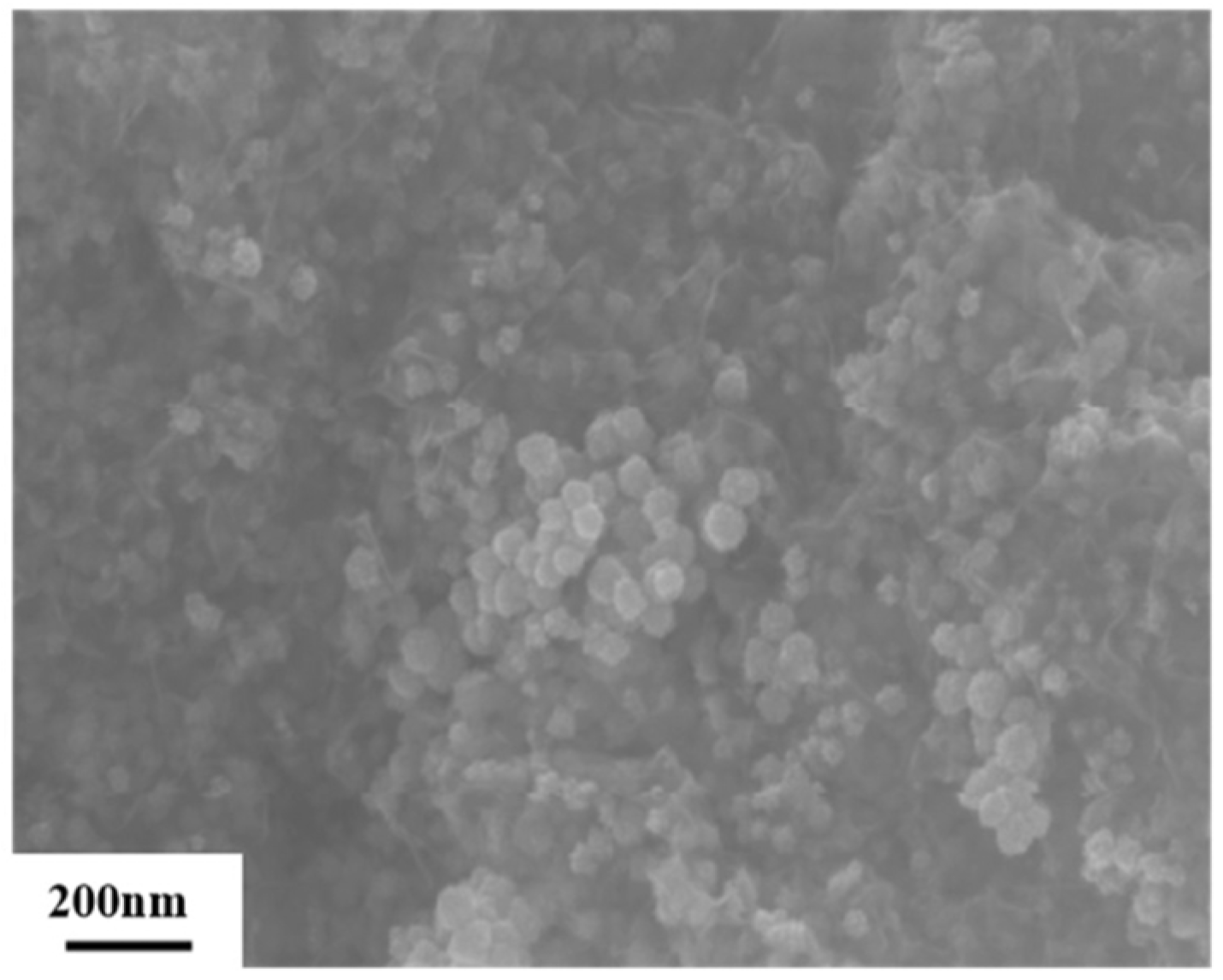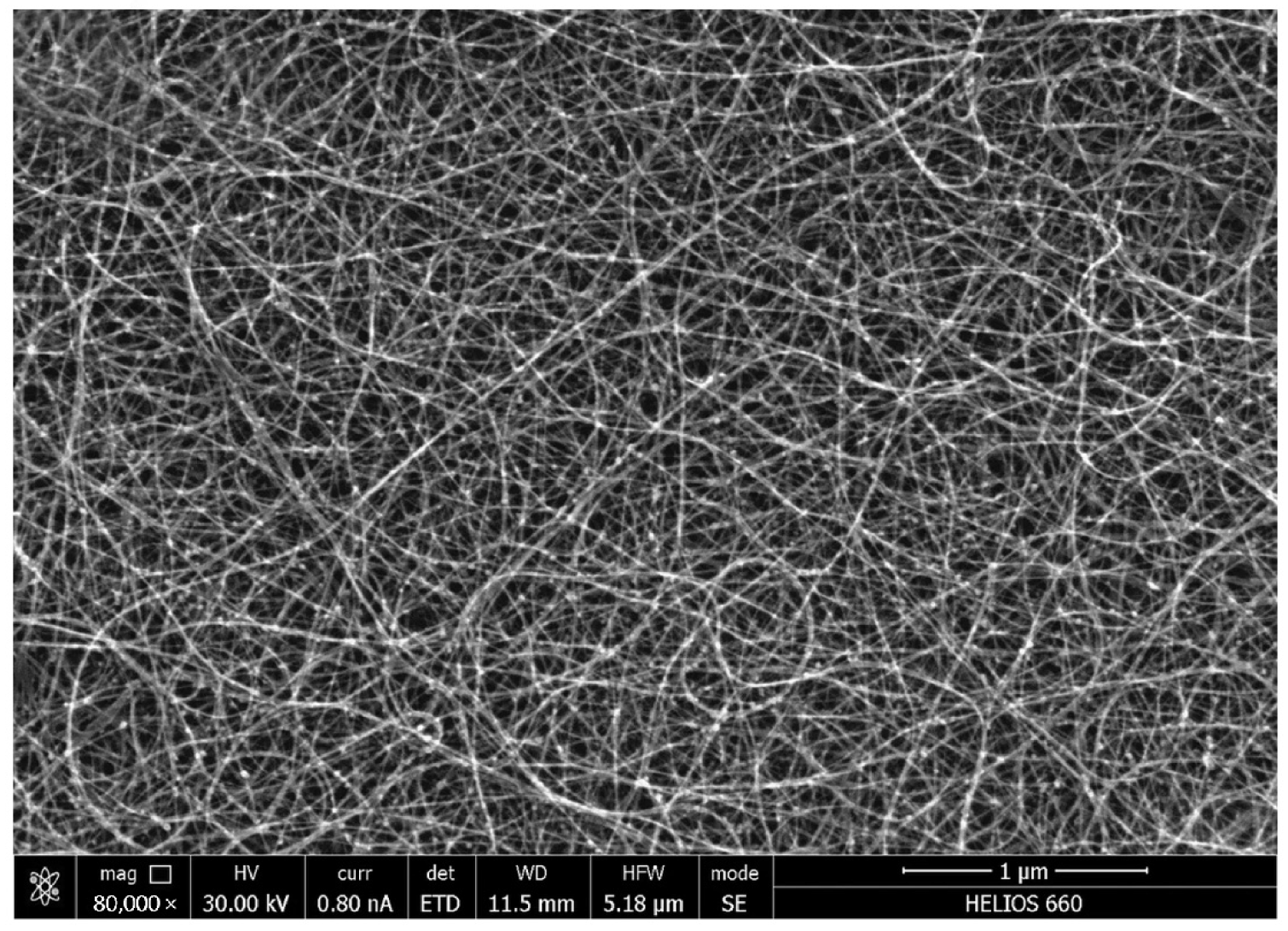Advanced Carbon Nanostructures: Synthesis, Properties, and Applications II
Funding
Data Availability Statement
Conflicts of Interest
References
- Kharlamova, M.V.; Kramberger, C.; Rudatis, P.; Pichler, T.; Eder, D. Revealing the doping effect of encapsulated lead halogenides on single-walled carbon nanotubes. Appl. Phys. A 2019, 125, 320. [Google Scholar] [CrossRef]
- Kharlamova, M.V.; Yashina, L.V.; Eliseev, A.A.; Volykhov, A.A.; Neudachina, V.S.; Brzhezinskaya, M.M.; Zyubina, T.S.; Lukashin, A.V.; Tretyakov, Y.D. Single-walled carbon nanotubes filled with nickel halogenides: Atomic structure and doping effect. Phys. Status Solidi B 2012, 249, 2328–2332. [Google Scholar] [CrossRef]
- Kharlamova, M.V.; Yashina, L.V.; Volykhov, A.A.; Niu, J.J.; Neudachina, V.S.; Brzhezinskaya, M.M.; Zyubina, T.S.; Belogorokhov, A.I.; Eliseev, A.A. Acceptor doping of single-walled carbon nanotubes by encapsulation of zinc halogenides. Eur. Phys. J. B 2012, 85, 34. [Google Scholar] [CrossRef]
- Kharlamova, M.V.; Kramberger, C.; Rudatis, P.; Yanagi, K.; Eder, D. Characterization of the electronic properties of single-walled carbon nanotubes filled with an electron donor—rubidium iodide: Multifrequency Raman and X-ray photoelectron spectroscopy studies. Phys. Status Solidi B 2019, 256, 1900209. [Google Scholar] [CrossRef]
- Kharlamova, M.V.; Kramberger, C.; Domanov, O.; Mittelberger, A.; Yanagi, K.; Pichler, T.; Eder, D. Fermi level engineering of metallicity sorted metallic single-walled carbon nanotubes by encapsulation of few-atom thick crystals of silver chloride. J. Mater. Sci. 2018, 53, 13018–13029. [Google Scholar] [CrossRef]
- Kharlamova, M.V.; Sauer, M.; Egorov, A.; Saito, T.; Kramberger, C.; Pichler, T.; Shiozawa, H. Temperature-dependent inner tube growth and electronic structure of nickelocene-filled single-walled carbon nanotubes. Phys. Status Solidi B 2015, 252, 2485–2490. [Google Scholar] [CrossRef]
- Kharlamova, M.V.; Sauer, M.; Sloan, J. Comparison of the electronic properties of sorted metallic and semiconducting nickelocene-filled single-walled carbon nanotubes. Appl. Phys. A 2024, 130, 738. [Google Scholar] [CrossRef]
- Kharlamova, M.V.; Sauer, M.; Saito, T.; Krause, S.; Liu, X.; Yanagi, K.; Pichler, T.; Shiozawa, H. Inner tube growth properties and electronic structure of ferrocene-filled large diameter single-walled carbon nanotubes. Phys. Status Solidi B 2013, 250, 2575–2580. [Google Scholar] [CrossRef]
- Kharlamova, M.V.; Kramberger, C.; Saito, T.; Shiozawa, H.; Pichler, T. Growth dynamics of inner tubes inside cobaltocene-filled single-walled carbon nanotubes. Appl. Phys. A 2016, 122, 749. [Google Scholar] [CrossRef]
- Kharlamova, M.V.; Sauer, M.; Saito, T.; Sato, Y.; Suenaga, K.; Pichler, T.; Shiozawa, H. Doping of single-walled carbon nanotubes controlled via chemical transformation of encapsulated nickelocene. Nanoscale 2015, 7, 1383–1391. [Google Scholar] [CrossRef] [PubMed]
- Wo, X.; Yan, R.; Yu, X.; Xie, G.; Ma, J.; Cao, Y.; Li, A.; Huang, J.; Huo, C.; Li, F.; et al. One-Step Synthesis of 3D Graphene Aerogel Supported Pt Nanoparticles as Highly Active Electrocatalysts for Methanol Oxidation Reaction. Nanomaterials 2024, 14, 547. [Google Scholar] [CrossRef] [PubMed]
- Garakani, S.S.; Zhang, M.; Xie, D.; Sikdar, A.; Pang, K.; Yuan, J. Facile Fabrication of Wood-Derived Porous Fe3C/Nitrogen-Doped Carbon Membrane for Colorimetric Sensing of Ascorbic Acid. Nanomaterials 2023, 13, 2786. [Google Scholar] [CrossRef] [PubMed]
- Komrakova, S.; An, P.; Kovalyuk, V.; Golikov, A.; Gladush, Y.; Mkrtchyan, A.; Chermoshentsev, D.; Krasnikov, D.; Nasibulin, A.; Goltsman, G. Hybrid Silicon Nitride Photonic Integrated Circuits Covered by Single-Walled Carbon Nanotube Films. Nanomaterials 2023, 13, 2307. [Google Scholar] [CrossRef] [PubMed]
- Komlenok, M.; Pivovarov, P.; Popovich, A.; Cheverikin, V.; Romshin, A.; Rybin, M.; Obraztsova, E. Crystallization of Copper Films on Sapphire Substrate for Large-Area Single-Crystal Graphene Growth. Nanomaterials 2023, 13, 1694. [Google Scholar] [CrossRef]
- Qian, F. Direct Growth of Patterned Vertical Graphene Using Thermal Stress Mismatch between Barrier Layer and Substrate. Nanomaterials 2023, 13, 1242. [Google Scholar] [CrossRef] [PubMed]
- Kharlamova, M.V. Kinetics, Electronic Properties of Filled Carbon Nanotubes Investigated with Spectroscopy for Applications. Nanomaterials 2023, 13, 176. [Google Scholar] [CrossRef] [PubMed]





Disclaimer/Publisher’s Note: The statements, opinions and data contained in all publications are solely those of the individual author(s) and contributor(s) and not of MDPI and/or the editor(s). MDPI and/or the editor(s) disclaim responsibility for any injury to people or property resulting from any ideas, methods, instructions or products referred to in the content. |
© 2024 by the author. Licensee MDPI, Basel, Switzerland. This article is an open access article distributed under the terms and conditions of the Creative Commons Attribution (CC BY) license (https://creativecommons.org/licenses/by/4.0/).
Share and Cite
Kharlamova, M.V. Advanced Carbon Nanostructures: Synthesis, Properties, and Applications II. Nanomaterials 2024, 14, 2026. https://doi.org/10.3390/nano14242026
Kharlamova MV. Advanced Carbon Nanostructures: Synthesis, Properties, and Applications II. Nanomaterials. 2024; 14(24):2026. https://doi.org/10.3390/nano14242026
Chicago/Turabian StyleKharlamova, Marianna V. 2024. "Advanced Carbon Nanostructures: Synthesis, Properties, and Applications II" Nanomaterials 14, no. 24: 2026. https://doi.org/10.3390/nano14242026
APA StyleKharlamova, M. V. (2024). Advanced Carbon Nanostructures: Synthesis, Properties, and Applications II. Nanomaterials, 14(24), 2026. https://doi.org/10.3390/nano14242026



